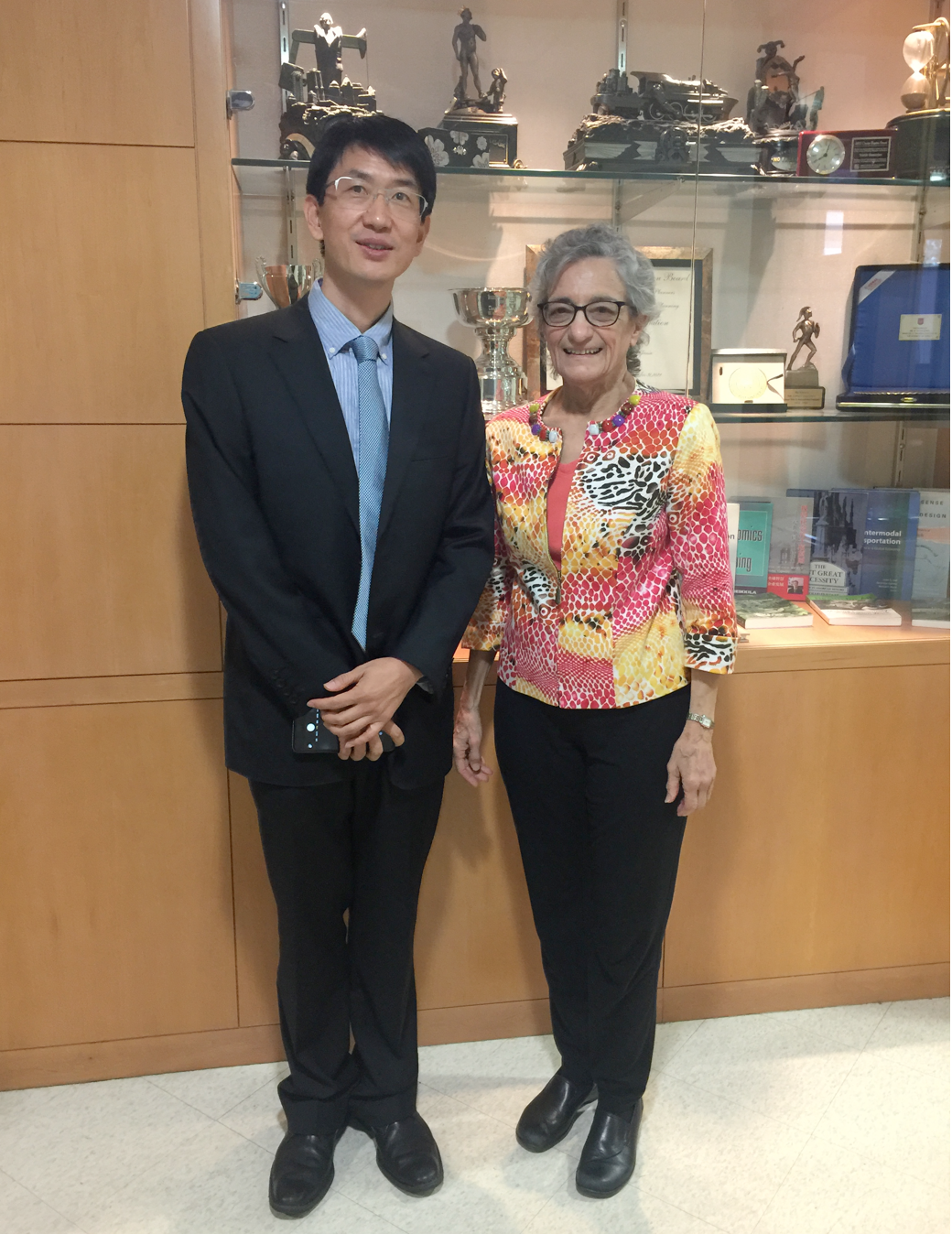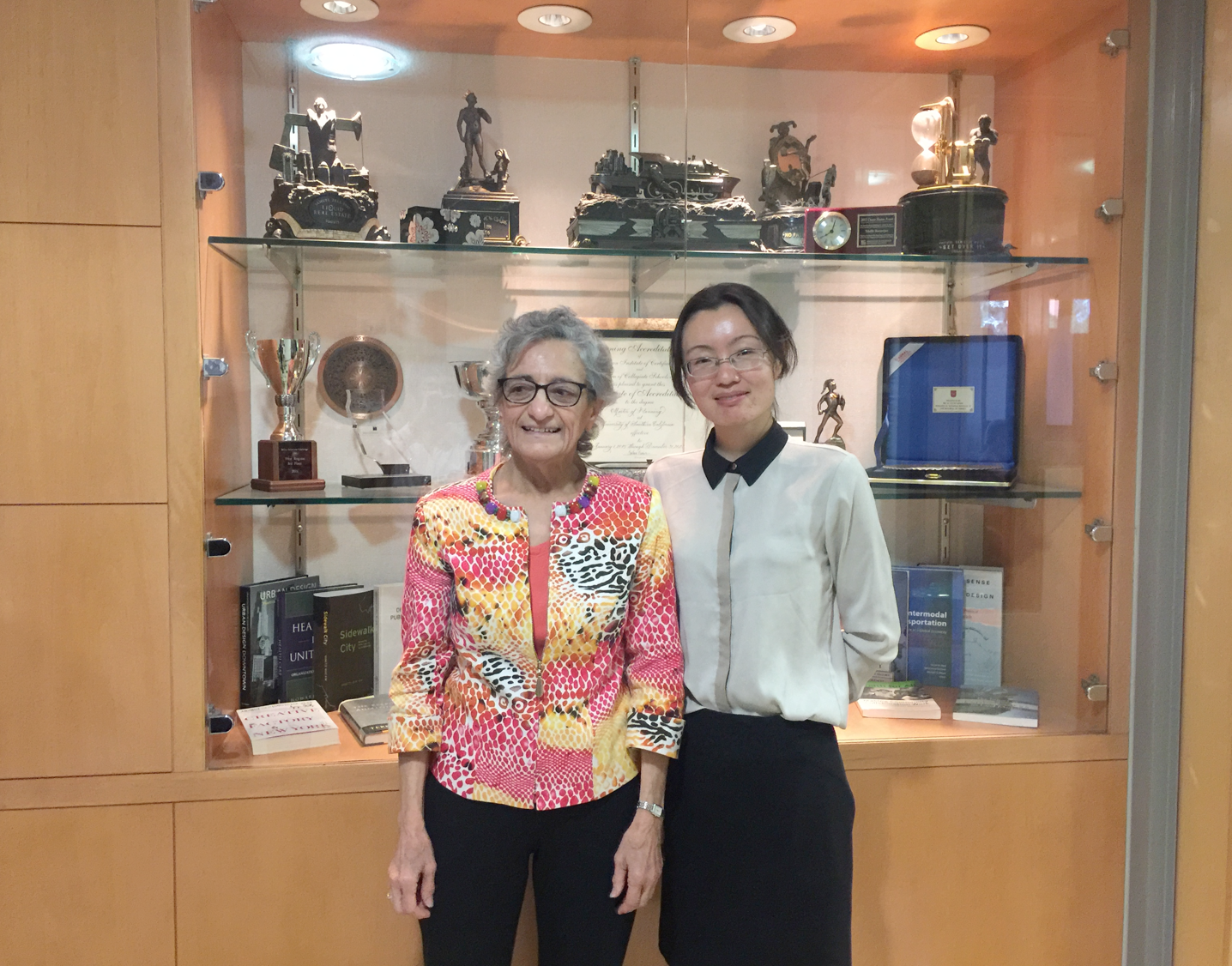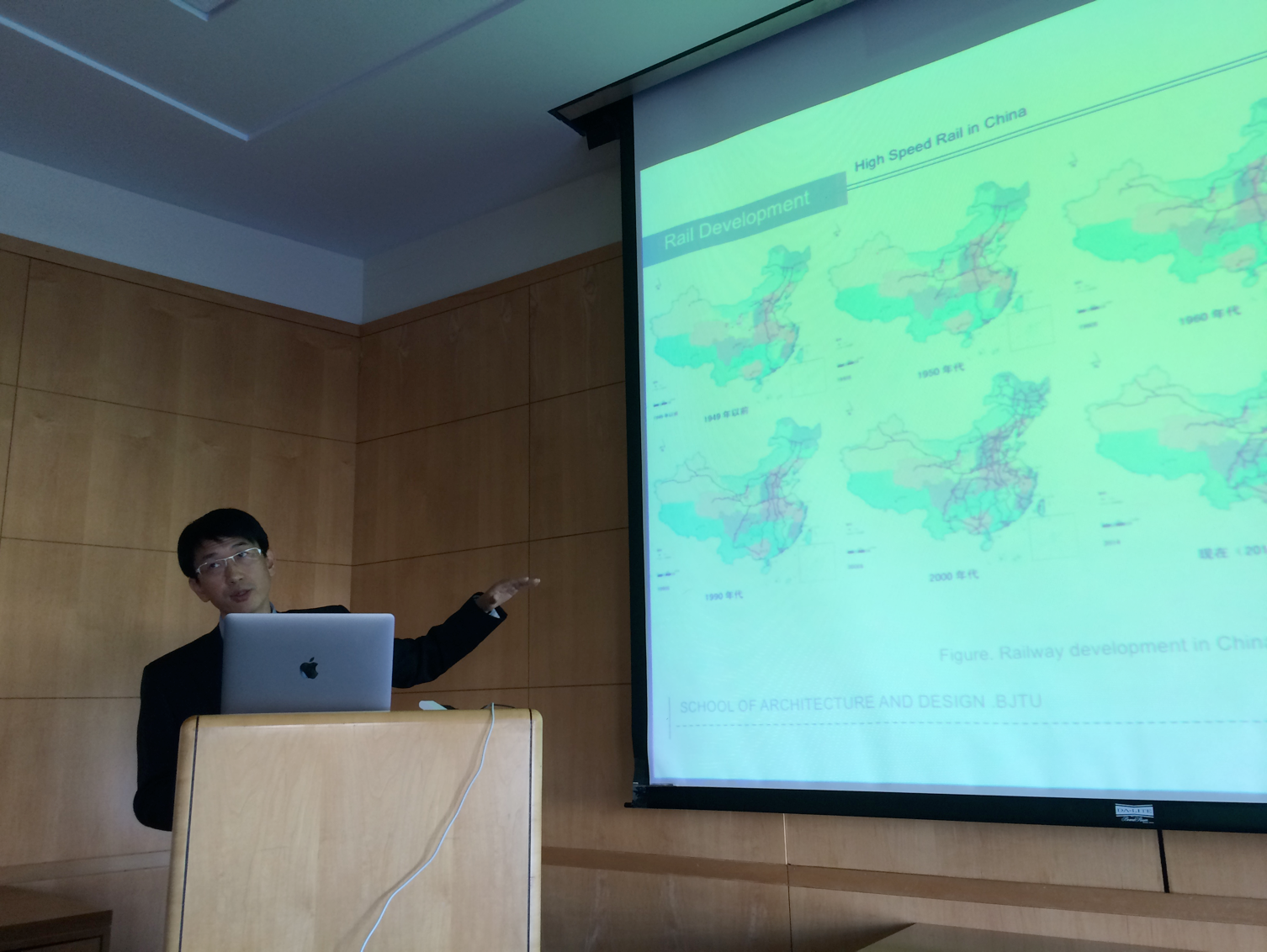News | BJTU Professors Haishan Xia and Chun Zhang Present Rail Transit Research at METRANS
Stop the VideoNews

METRANS UTC
BJTU Professors Haishan Xia and Chun Zhang Present Rail Transit Research at METRANS
Saturday, December 3, 2016
by By Rui Zhang, MPL 2018
On Thursday November 10th, METRANS jointly sponsored a research seminar on the USC campus with the International Policy, Planning, and Management (IPPAM) Graduate Student Association, titled “Two Case Studies on Land Use Impacts of Rail Transit in China.” The seminar featured two special guests from China, Dr. Haishan Xia, Professor and Dean at the School of Architecture and Design of Beijing Jiaotong University (BJTU), and Dr. Chun Zhang, Associate Professor and Director of International Affairs, also at the School of Architecture and Design of BJTU. Xia specializes in studying rail transportation and smart city planning, underground urban space integration planning and design, and green building design, while Zhang’s research focuses on planning, urban form and air quality, job-housing accessibility and neighborhood change.


Dr. Haishan Xia with METRANS Director Professor Genevieve Giuliano
Photo by Chun Zhang
Xia first presented on urban form changes led by rail transportation, using the case of Beijing-Tianjin-Hebei (JJJ) Region. His research was conducted on three levels. On the national level, China’s high-speed rail (HSR) increases regional gaps due to imbalanced spatial distribution of HSR. On the regional level (JJJ region as an example), county-level cities along the railways are more accessible and the connectivity of the whole region is strengthened. However, a considerable fraction of the population moves out of remote areas, concentrating in Beijing and Tianjin areas. On the city level, while the rail transit has greatly enhanced the residential suburbanization and the population clustering at station nodes, very few jobs have been created in suburbs, which makes the clustering effect greater than the scattering effect.


Director Giuliano and Dr. Chun Zhang
Photo by Chun Zhang
Based on Dr. Xia’s analysis of China’s HSR effects, Dr. Zhang used the case of Yizhuang, Beijing to present her research titled “Can Light Rail Benefit Job-Housing Relationships and Land Use-Transportation Integration in New Town?” She analyzed the surrounding land use of Yizhuang metro line stations and found that multi-functional land use in the original planning was simplified to industrial or residential land use in construction and operation due to the over-development of the properties. Although metro lines were developed in the suburbs to aid in the transportation of residents from city centers to suburbs, the gap between residential suburbanization and job creation suburbanization made more people transfer to the center of the city.


Photo by Eric Tunell
The discussion on China’s HSR led to the comparison of long railway construction in different countries. Joanna Yu, the IPPAM director, shared one of her Indonesian students’ story of the armed conflict between residents and the government upon land acquisition for railway extension. “I think lots of countries have trouble to build longer railway networks in their places,” she said, remarking that the reasons were “not only because of the budget issue, but also the land collection.” The hardship in collecting land for transportation development also resonated with California’s similar dilemma, arousing a vigorous discussion on lesson learning and policy comparison.
Rui Zhang
Rui Zhang is a Master of Planning student in the Price School of Public Policy at the University of Southern California with transportation concentration. She currently works as the event coordinator for the METRANS Transportation Center and plans to start a career on transportation planning and GIS spatial analysis. She can be reached at [email protected].
News Archive
- December (1)
- November (6)
- October (4)
- September (2)
- August (3)
- July (4)
- June (3)
- May (7)
- April (8)
- March (11)
- February (8)
- January (7)
- December (7)
- November (8)
- October (11)
- September (11)
- August (4)
- July (10)
- June (9)
- May (2)
- April (12)
- March (8)
- February (7)
- January (11)
- December (11)
- November (5)
- October (16)
- September (7)
- August (5)
- July (13)
- June (5)
- May (5)
- April (7)
- March (5)
- February (3)
- January (4)
- December (4)
- November (5)
- October (5)
- September (4)
- August (4)
- July (6)
- June (8)
- May (4)
- April (6)
- March (6)
- February (7)
- January (7)
- December (8)
- November (8)
- October (8)
- September (15)
- August (5)
- July (6)
- June (7)
- May (5)
- April (8)
- March (7)
- February (10)
- January (12)















